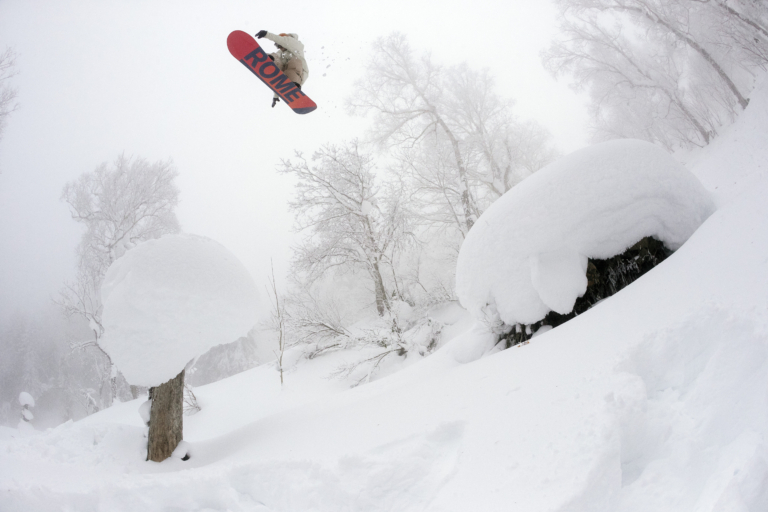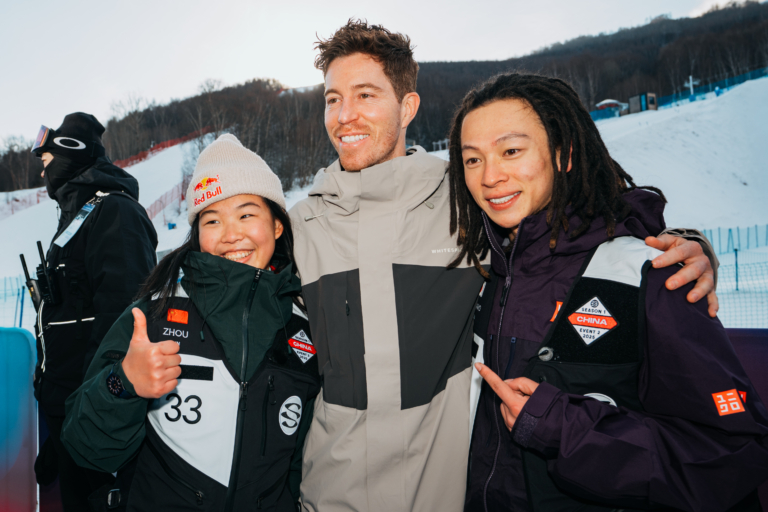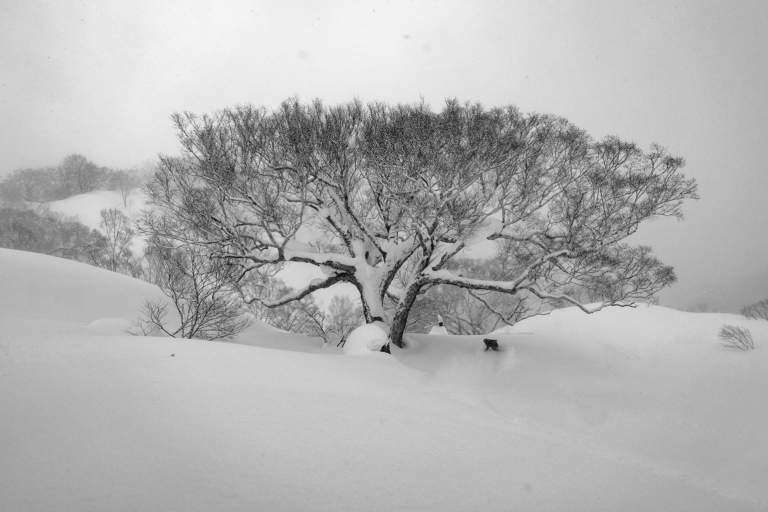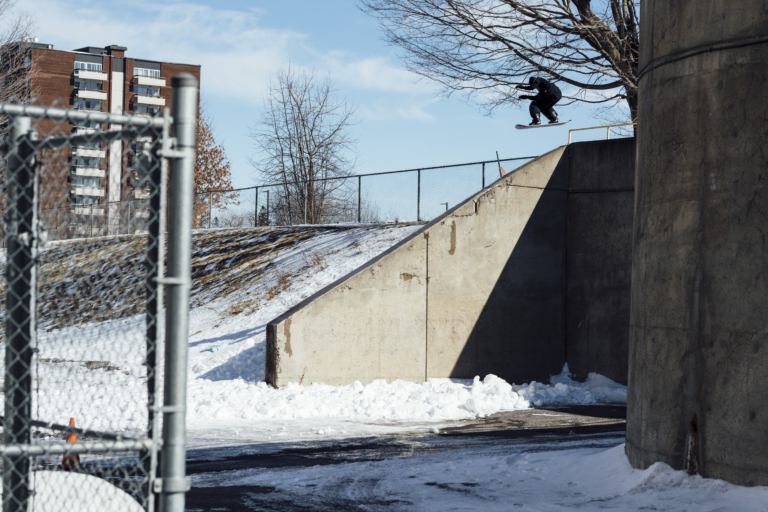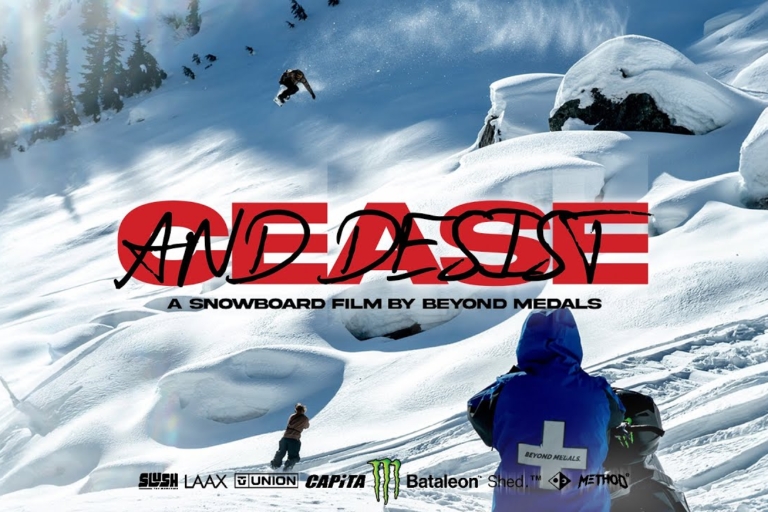Last summer, Maddie Mastro did the same thing she’s been doing for the past sixteen years: Packed up her car and pointed it north from California to Oregon, landing at the base of Mount Hood, an 11,249-foot-tall dormant stratovolcano that holds snow all summer long. Ever since she was 6 years old, Maddie has made the pilgrimage to Mt. Hood, first as a High Cascade camper, and now as one of the best halfpipe riders in the world.
This past year’s trip to Hood was extra significant, though. In December of 2021, Maddie injured her ankle, which kept her off her snowboard for the majority of the season. When she returned from the Olympics, she finally had a chance to heal her ankle and devoted herself to PT and rehab, taking a break from her board in order to come back stronger. So when she dropped into the High Cascade lane last summer, she was back, ankle fully healed just in time to get a fresh start on the Palmer Glacier, a veritable second home for the Mammoth Mountain local.
Since then, Maddie has been on a tear, spending the fall in Europe, “knocking the rust off” as she says, at Stomping Grounds before spinning early season laps in Colorado. In the beginning of January she’ll grab her pup, Pippy, and head to Switzerland for the Laax Open, a trip that includes time in the famed Laax halfpipe as well as (hopefully) some powder turns. Both of those things foster a balance for Maddie, a combination of unbridled ripping and the challenges and achievements of competition. As winter gets underway, we caught up with Maddie about her perspective heading into a new season. – Mary T. Walsh
We need to talk about the socks in Lake Trillium situation. Why crew socks in the lake?
Last summer, Ryan and I were on vacation in Mexico and I was like, “Let’s post a video of me on vacation, but it’s going to be cringey if you look closely because you’ll see that I’m wearing my socks in the pool.” I would say about 50% of my followers got it. The other 50% did not. I was getting people sending heart eyes all the way to “Why are you wearing your socks?!” It was just trying to be a subtle hint to the fact that socks in the pool or in the lake are cringey and it’s funny.
The squish factor.
I mean it’s gross. I don’t recommend.
And you posted that on TikTok too, right?
I did. The TikTok one, I got a lot of heat on. People didn’t understand it was a joke, but that almost made it even more funny.
Your TikTok is a mix of humor, useful snowboarding advice, and openness about your life and what you’re experiencing—and snowboarding, of course. It seems like you’ve cracked the TikTok code?
I have just tried to create relatable content where people can learn about snowboarding, whether it’s teaching women about it, offering tips—because snowboarding can be a super intimidating thing—or whatever it is. I try to use TikTok as a platform to help educate and excite people about winter and how much fun this sport can be and the places it can take you. I don’t know if I’ve cracked TikTok, but I really enjoy using the app. It’s a creative outlet where I can fully do whatever; it’s like throwing spaghetti at a wall and seeing what sticks.
You have been going to Mt. Hood since you were 6 years old. As you’ve gone from grom to professional snowboarder to Olympian, etc., how has your experience of spending summer at Hood changed?
I started out as a High Cascade camper. Colleen Quigley was my first High Cascade coach. I was as full-blown camper as it can get. I was a day camper, though. I was six or seven at the time, so Mama Mastro wouldn’t let me spend the night quite yet. But I did the full experience—the skating, the movies, the river rafting, the unicorn bus, all of it. That is forever my core memory of Hood and how Hood lives in my brain, and that was what set a solid foundation of love for that place, for me.
As I got older, I was able to drive up to Hood by myself and I got to do a whole other evolution of experiencing summer camp. And then all the way up to now, I feel that the more adult I become, the more of a kid I am—the more extracurricular activities I want to do. It’s going back toward when I was a 6-year-old running around Gov’y. Overall, the experience of Hood has really been all about friends, having fun, and snowboarding. And those three things have always remained the same since I first started going there.
When you’re riding there now, are you focusing on training and learning new tricks when you’re there, or are you mainly keeping a baseline during the off-season?
A little bit of both. Hood is one of those halfpipes in one of those places, just in general, where after a certain time of day it’s a slushfest. I want to keep up with my tricks and set a strong baseline for the season and the preseason, and then in the afternoon, it’s a slushy, fun halfpipe where you can try random silly things and just have a good time.
A few years ago you were the first woman to land a double crippler and it’s a staple in your contest runs. Where do you want to go from there, in terms of the halfpipe?
Ever since the double crippler came about, I just envisioned doubles in my snowboarding—not just double cripplers, but front double tens, switch doubles. I want doubles to stick around in women’s snowboarding when I’m gone—and I also want to be the one to do the doubles. I want to make doubles the norm.
How does the mental aspect come into play when you’re learning a new trick, especially when it’s pretty gnarly?
Fear is a big thing. We’re humans. Fear exists in everything we do, and managing that is a big part of things. When I’m trying to learn a big, scary trick, I typically envision the moment of landing or the feeling of how happy I’ll be after I try it, and that helps my mindset and motivates me to do it. “How will I feel after I do this?” Every time the answer is, “I’ll feel stoked. I’ll feel proud.” So, it’s just envisioning the positive, exciting, fun part of what could be.
How do you stay motivated during the learning process and find a balance between pushing yourself while also being understanding if the trick isn’t going the way you want at that moment?
If I’m getting frustrated or stuck on a trick, I always know that there is something else I can work on that will make me excited. I can always reset and come back to it. I also tell myself, “When I’m ready, it’ll happen.” It’s going to happen when it’s meant to happen. It’s not going to come faster or slower, so there’s always time to reset, go try something else, go ride something else, and come back.
When it comes to competing, how do you balance your love and enjoyment of snowboarding, which has an inherent freedom to it, with the competitive element where you need to perform at a specific moment in a specific setting?
That’s a great question. I’m super competitive, so I guess with whatever I do or love, there’s always a little bit of a competitive aspect in it. When it comes to snowboarding, I love it and I have a lot of fun doing it, but I think I’ve just grown up competitive.Keeping that balance and mindset can be hard, but I would say, for me, snowboarding is so fun, and learning the new tricks and doing well is also a reward for all of the hard work, and that keeps it fun.
I think that is a common trait among elite athletes of any sport, that competitiveness with yourself to be like, “I want to do this because I know that I can” and the enjoyment of succeeding in that way.
Totally.
Speaking of that, you made a big impact during the Olympics when you were so open on social media about your experience in Beijing, not being able to show the riding you wanted to and that you knew you were capable of. Was it hard to open up publicly in that way?
Totally. During the Olympics I had grown a group of people who were following my story and watching my TikToks. I was showing a lot of the happy, fun parts of it: the village, hanging out with the friends, practice, and doing funny skits. That was the beginning of my Olympic experience and what it truly did look like.
So it felt weird not to show what the rest of my true experience looked like. And the rest of my true Olympic experience was a lot of disappointment, and sad, unhappy memories. Because we go there to perform and when you don’t perform and do what you wanted to do, it’s not happy, it’s not fun, it’s hard.
I wanted to show that part of my experience because I had already been so open with showing everything else that it didn’t seem right not to share what it truly was for me. I wanted to show people that it is okay to be sad and disappointed and completely bummed. That’s okay.
I think it is really powerful to hear someone who has accomplished so much, who is at the Olympics, saying, “Yeah, I get disappointed in myself sometimes, too,” or “This didn’t go how I wanted it to go and it bummed me out.” So many of us, in general, are so hard on ourselves and that is a really powerful message of facing challenges and being accepting of ourselves.
Yeah. A big one that I’ve been telling myself lately is that snowboarding is this super fun thing that I love and I’m super passionate about, but there are days where snowboarding makes me cry. Crying is okay. Crying is a good thing.If I see one of the girls at the pipe that’s younger and they’re crying, I’m like, “Hey, it’s okay. Yes, this is hard. This is scary. Crying is okay.”That’s something I wish I would’ve told myself when I was that age and just another part of things that I wanted people to know—that sadness or frustration or disappointment are okay feelings to have. It doesn’t mean you’re weak or you’re not strong. It’s not that at all. You have emotions. You’re human.
You’re putting a lot of dedication into something, and you might just need a moment to find your balance.
After the Olympics I did simply that. I was like, “I don’t want snowboard right now. I need to remove myself.” I went home and went to the gym and hung out with my family and my dog. And that was okay.
I had hurt my ankle pretty badly in December leading into the Olympics, so I didn’t snowboard really at all until Beijing. Then I snowboarded at the Olympics and my ankle still wasn’t healed. When I went home and I rehabbed my ankle, I was like, “I’m going to get my ankle nice and healthy, so I’ll never have to think about my ankle hurting like this again. And I’m going to take a break from snowboarding. It’s been a long four years with no breaks and I’m going to take a break.” I think maybe if my ankle was good, I might’ve gone and taken some soul turns and ridden some pow, but I was in a place where I needed to rehab my ankle, and mentally it was a good thing being at home with my family and focusing on just getting healthier physically, which helps you get healthier mentally.
And now your ankle is feeling good?
Yes, I’m super happy.
When you went to Hood last season, was that one of the first times you were back on snow?
Yeah, I went to Mammoth that spring. That was just a return to snow—keep it mellow, have some fun.And then Hood was my big time to see, “How does my ankle feel? Good? Don’t feel it anymore? Okay.” Go ride, go have fun, do whatever you want kind of thing.I wasn’t having to think about it, which was super nice.
That’s awesome.
For sure. It was my first time ever having to properly rehab something, so that was a whole new experience for me.
And now this season is underway already. You were in Europe for part of the fall, right?
I was in Switzerland for a month and then Austria only for ten days. A quick strike mission.
What were you doing there?
In Switzerland, there’s this big camp called the Stomping Grounds. All the halfpipe riders and all the slope riders head out there to train. It’s pretty much perfect jumps, perfect halfpipe. It’s three-and-a-half weeks or so of riding halfpipe, learning new things, knocking the rust off, and setting yourself up for the season ahead. We’ve been going to the Stomping Grounds for a while now. This was maybe our fifth or sixth season. It was a really good time.
How did Pippy like Europe?
Pippy loved Europe. She likes to roll around in cow poop and Switzerland has plenty of that. Lots of smells, lots of throwing the ball, she loved Europe. She lives a very, very bougie, spoiled life for a little rescue dog.
When did you adopt her? Do you know what breeds she is?
I adopted her last year. I’m probably one of the craziest dog people you’ll ever meet. I love dogs and I’ve been saying that I’ve wanted a dog for a while, but I’ve always been like, “It’s not the right time. I’m busy with snowboarding.” And then I got hurt on December 20th and I found Pippy. I adopted her on January 6th. She’s about a year and some change now. She is the best thing that ever happened to me. I got a small dog because I wanted a dog that would be able to travel with me, which is a hilarious because that used to make me cringe, but now I own one, so I don’t have much to say on that.
Dogs make life good. Pippy is a mutt. I got her DNA tested and I don’t know if I fully believe the DNA test. She’s Chihuahua and Pomeranian, which is the believable part, but then they said she’s 20% pit bull, which is the unbelievable part because she’s twelve pounds. That was a little rogue.
What is it like traveling with her? Does she like flying?
She is a pretty high-energy dog, so she just takes a little sleeping pill and then wakes up in Europe. She’s flown a lot of places, so she’s gotten good at it and now she’s a good flyer.
She basically goes anywhere you go?
Yeah, for the most part. She’ll go to Switzerland with us for the Laax Open. She’ll go to all the domestic contests. I don’t know if she’ll go to the World Champs in Georgia. She might take a little visit to grandma’s house instead. But for the most part she will go wherever I go, which probably is a blessing and a curse for her. But I’m happy about it.
Finally, how are you feeling going into this winter?
Last year was a weird season for me. It was an Olympic season. I didn’t do a lot of contests. I didn’t really snowboard at all. So this season, I’m excited to be back on my board. I am excited to do contests again, which sounds kind of funny, but I haven’t felt like I had a season of just doing contests. And I’m just excited to snowboard. I spent the whole last season pretty much in a boot—like an ankle boot, not a snowboard boot—so I’m excited to be back in my snowboard boots and just snowboard this season.







